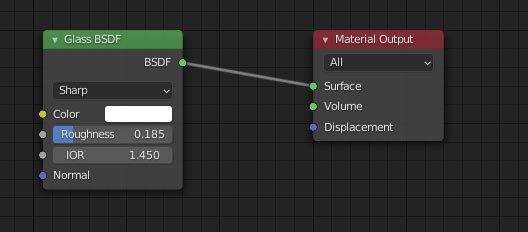I have a gas lamp that shines through the glass from the inside. In one environment it works perfectly and enough light comes through the glass (normal glass BSDF). But now I have inserted the identical gas lamp into a different environment and there almost no light comes through the glass. The render settings are identical and, as I said, it is the same lamp (I haven't changed anything). So it must be due to some general attitude. Could someone tell me what to look out for in general? I just can't figure out why it just doesn't work in one environment. Thanks!
Edit: It seems to have something to do with the scaling. If I scale the glass to 0.2, it works. In the original .blend file however, the lamp is normally scaled to 1.0 and it works there too. But if I append this lamp to another .blend file, I always have to scale it to 0.2 first in order for it to work. At environment 2, I happened to have scaled it to it, which is why it worked.




